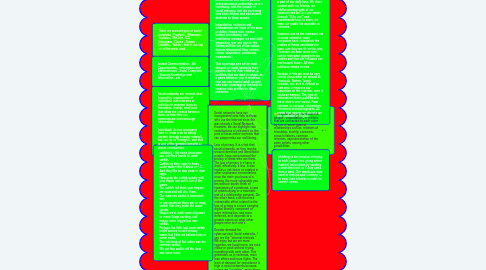SOCIAL NETWORKS
by Valeria Lopez

1. Social networks are Internet sites formed by communities of individuals with interests or activities in common (such as friendship, kinship, work) and that allow the contact between them, so that they can communicate and exchange information. Individuals do not necessarily have to know prior to taking contact through a social network, but can do so through it, and that is one of the greatest benefits of virtual communities.
2. There are several types of social networks : Facebok , Whatsapp , Youtube , WeChat , QQ , Instagram , Qzone , Tumblr , Linkedln , Twitter , that is the top 10 of the most used
3. Cyberbullying or harassment through the Internet is a phenomenon that alarms parents and government authorities, as it is increasing, with the growth of social networks and the increasing time that children and adolescents dedicate to these spaces. Intimidation, exclusion and mistreatment are faces of the same problem. People who receive hurtful, intimidating and humiliating messages are sent daily generating fear and pain in the victims and the fun of the stalker. Secrets discovered, false rumors, ruined reputations, continuous harassment. This is perhaps one of the main dangers of social networks that parents fear for their children. A problem that can start in school, as a game between your friends but that can also involve adult people who take advantage of the ease of creating fake profiles on these platforms.
4. Instant Communication , Job Opportunities , Information and Entertainment , Social Complaint , Sharing Knowledge and Information , etc.
5. Social networks have not incorporated new risks to those who use the Internet since this was already a Social Network. However, we can highlight two contributions of relevance on the part of these online contexts that can compromise our well-being. Loss of privacy. It is a fact that social networks, as they revolve around identified and identifiable people, have compromised the privacy of those who use them. The loss of privacy is a harm in itself, effectively, a loss. It also implies a risk factor or catalyst in other unpleasant circumstances since the more you know of a person, the more vulnerable you are without doubt: think of harassment of a pederast, a case of cyberbullying or a traumatic end of a relationship personal. On the other hand, a derived and undesirable effect related to the loss of privacy is a more complex digital identity, composed of more information, and more deferred, as it depends to a greater extent on what other people refer to it one's. Greater demand for cyber-survival. Social networks, I say, are the "internet festivals." We enjoy but we are more together, we touch more, we even elbow or push without trying, stumbling with each other. This generates, as in verbenas, more love affairs and more fights. The level of demand for coexistence is high in social networks because, in fact, we "socialize", many times in an abusive way and without being perceived.
6. catfishing : But some Americans use only their hands to catch catfish. Catfish lay their eggs in holes under water that is about 21° C. And they like to stay close to their eggs. Now grab the catfish quickly with your hands and pull it out of the water. The catfish will think your fingers are food and will bite them. The male sea catfish is important, too. In one aquarium there are so many catfish that they make the water cloudy. Maybe we'd catch some alligators to make things exciting, and maybe some big yellow river catfish. Perhaps the little bull-head catfish might survive in such muddy water, but I did not believe bass or perch could. The only kind of fish taken was the common catfish. We got five catfish off the lines and went home.
7. A social structure composed of people , organizations or entities that are connected to each other by one or more types of relationships such as: relations of friendship, kinship, economic, sexual relations, common interests, experimentation of the same beliefs, among other possibilities.
8. Social networking on the Internet is part of our daily lives. We share content with our friends, we publish photographs of our vacations and we turn our tastes through "I like you" and recommendations. In short, we make our public life available to everyone. However, due to the increased use of social networks, many companies have considered the profiles of future candidates to make sure they are fit for the jobs. Therefore we have to be very careful with what appears in our profiles and that can influence our professional future. All that publicans remain in time Because of this we must be very careful about what we upload to Facebook, Twitter, Tuenti, Linkedin, etc. as it is difficult to start zero or improve our reputation on the Internet, once it has been harmed. The type of information that is published in these sites is very varied. From opinions to personal information, comments and photographs. All words that appear on this site are also available in English.
9. phishing :is the practice of trying to trick people into giving secret financial information by sending e-mails that look as if they come from a bank. The details are then used to steal people's money, or to steal their identity in order to commit crimes.


